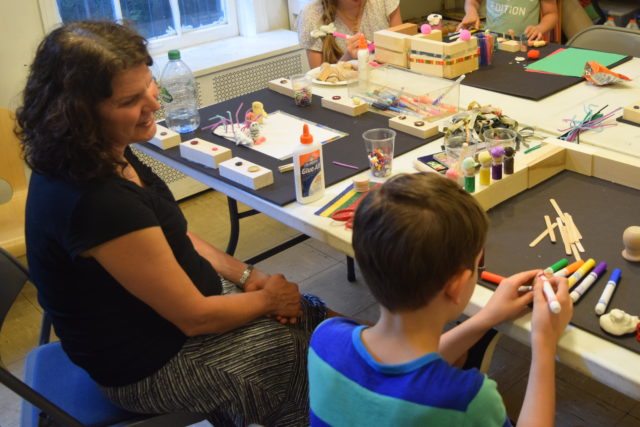4 Tips For How to Talk With Kids About COVID-19
April 3, 2020
Over the coming weeks, stay tuned for helpful tips for sheltering in place from Greenwich House Experts.

1. Validate their feelings.
It’s a scary, confusing time for people of all ages, and kids may be feeling especially frightened as they see the adults in their lives are also upset. Let them know that it’s okay to be worried and you’re here to talk about their feelings with them, keep them safe and give them the right information. They’ve likely been overhearing a lot of conversations or news programs that they don’t understand, so take time to sit down together and give them the basic fact-based information about what’s going on. Remind them that kids are not at a high-risk for the virus, and if they do get it they usually won’t get very sick.
Keep an eye out for kids who might be feeling very anxious but aren’t coming to you first to talk about their worries. Child psychologist Laura Sanders says to watch for kids who are washing their hands multiple times a day, even when they haven’t done anything that would require hand-washing, and other “overly repetitive behavior or over-ritualized behavior—[as in] they’re not just washing their hands now but they refuse to touch the doorknob or they constantly need to clean their desk with a wipe.” If they seem more avoidant or fearful, or ask for you to be around them much more often than what’s typical, they’re likely having feelings they’re having difficulty expressing. During a calm part of your day, sit them down and start a conversation by asking them how they’re feeling, or seeing if they have any questions about what’s happening.
2. Focus on the ways people are helping keep each other safe.
Stay positive. After explaining that there is an illness that is making a lot of people sick, share all of the ways everyone – including them – is helping to keep each other safe. For younger kids, explain that washing their hands and keeping their distance from other people helps stop the virus from spreading, and assure them that scientists are working on making new medicines. For older kids, you may want to also include information about how the government is asking schools and businesses to temporarily close, and for large gatherings like concerts to stop. You can teach them what it means to “practice social-distancing” or what it means to be “quarantined” so they’ll understand if they hear those words being used elsewhere.
3. Use this as a learning opportunity.
A lot of kids’ anxiety during this time could be based not only in not understanding what’s going on in current events, but things like how people even get sick in the first place or what makes one kind of illness different than another. For younger kids, start with the basics of what personal hygiene means and how it keeps them healthy. This page in Scholastic’s Learning Center has a few different articles and videos for different age groups about what germs are, how they’re spread and how they can be stopped.
Older kids might find it helpful to understand what COVID-19 is specifically and why it’s a bigger deal than other sicknesses. This article breaks it all down in simple language. They may also want to learn about the immune system, which the Scholastic Learning Center has a helpful video about. If they have questions about what a pandemic means, this article is a good overview, but it may be a frightening read for kids who are already very anxious about the outbreak. You may want to use it as a guide for how to explain it to them yourself rather than send it to them to read on their own.
4. Show how we’re all in this together.
It always helps to know that you’re not the only one experiencing something that upsets you. Knowing something scary is happening all around the world can be frightening, but you can point out that it also means there are a lot of other kids who are having the same experiences as them. Scholastic published a Kid Reporter’s Notebook from a girl in Shanghai who wrote about her own experiences and interviewed her neighbors about theirs. Let your kids read the article, or read a few excerpts aloud to them, and talk about how similar their lives are to yours, even when they’re all the way across the world.
The Children’s Safety Project is continuing to counsel children and non-offending family members who have been victims of abuse with Telehealth. During social distancing and self-quarantine, there’s a higher risk of domestic violence. If you or a loved one needs help, contact the Children’s Safety Project at childrenssafety@greenwichhouse.org or 917-261-4598 ext. 232

